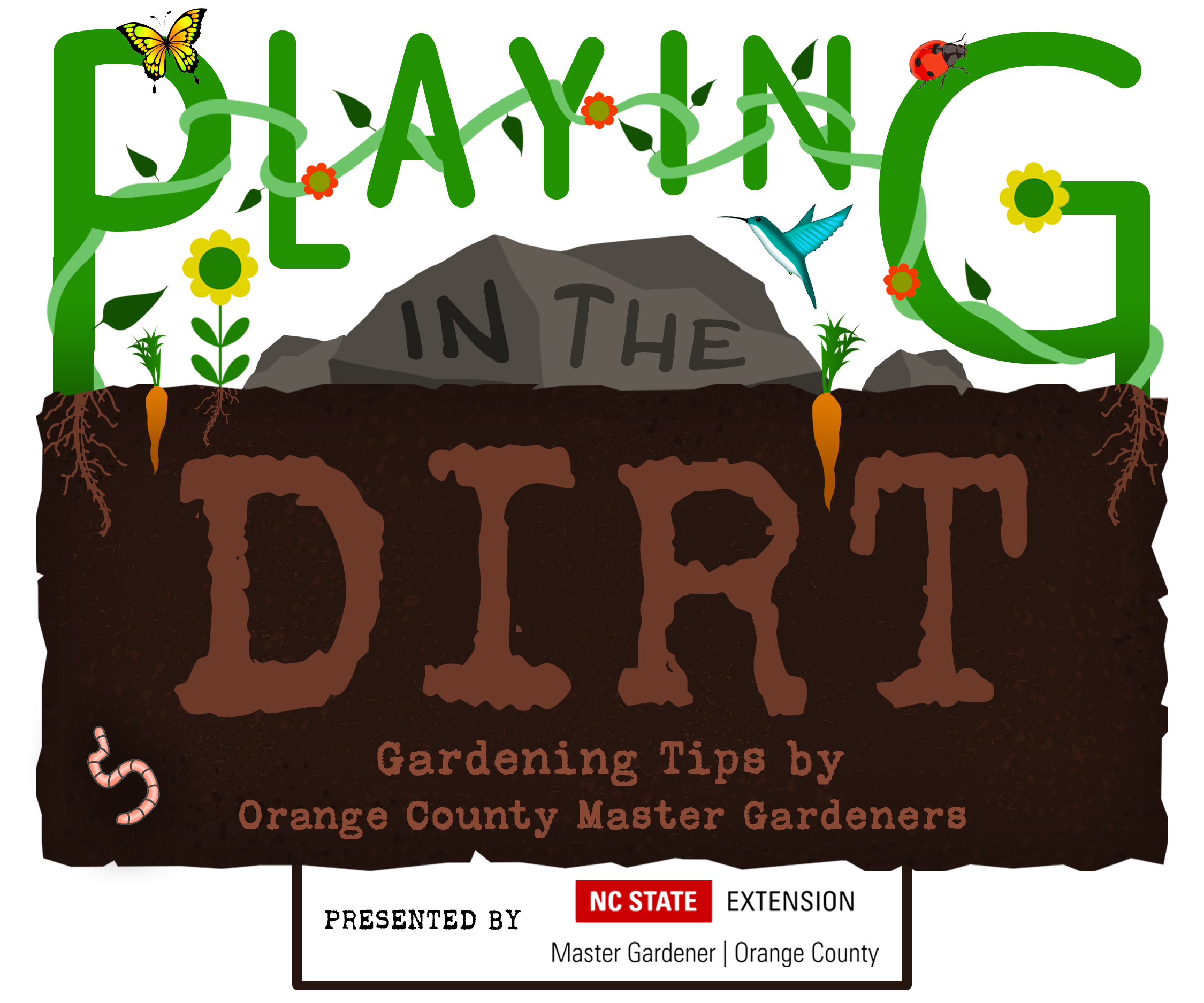
97.9 The Hill and Chapelboro.com have partnered with NC State Extension Master Gardener℠ volunteers of Orange County for “Playing in the Dirt,” a monthly column providing information and inspiration to gardeners of all skill levels! Check back on Chapelboro each month for a new subject – from our gardens to yours!
By Margaret Alford Cloud, Orange County Master Gardener℠ volunteer
Backyard composting is an easy way to get rid of food scraps. It also has important benefits: It keeps food waste out of landfills, which helps the environment. Use of compost in the garden improves the health, moisture and texture of soil.
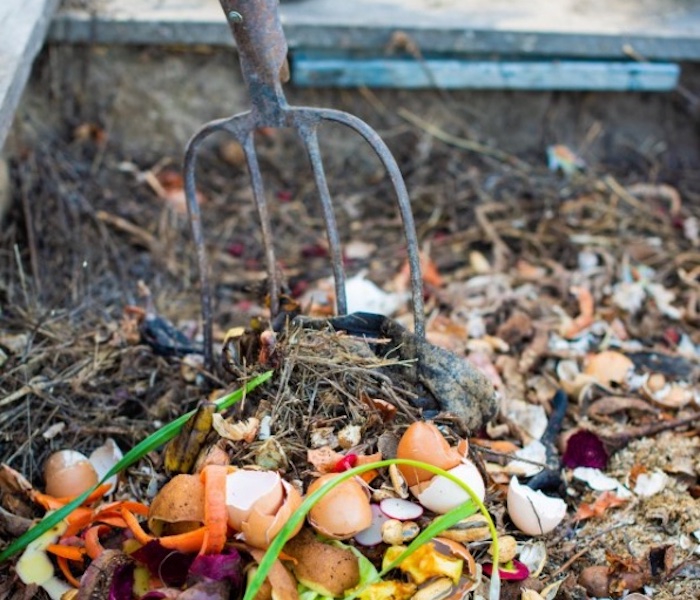
Food and plant scraps in compost bin. (U.S. Environmental Protection Agency)
In a composting container or pile, organic materials such as food scraps are mixed with plant materials that help with decomposition. The breakdown is helped by heat, water and oxygen as well as organisms such as bacteria, fungi, nematodes, worms, slugs and snails. The result is a brown, crumbly material that can be used as a soil amendment.
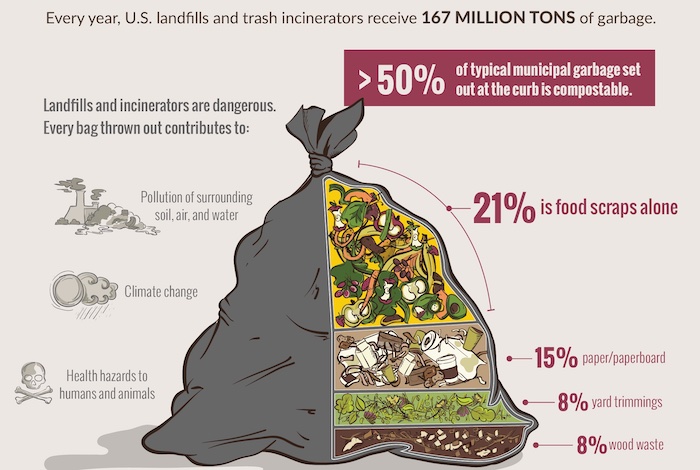
About 50% of garbage is compostable. Institute for Local Self-Reliance (graphic from U.S. Environmental Protection Agency website)
Orange County estimates that 47% of the county’s waste that goes to landfills could be composted instead. Of that, over half is food waste.
When organic waste decomposes in a landfill, it releases methane, a greenhouse gas. Composting keeps the production of methane and carbon dioxide to a minimum because it uses aerobic decomposition. When oxygen is present, microbes that produce methane are not active.
Kay Johnson, a Master Gardener volunteer in Orange County, talked about compost in a recent Dig Deeper talk at the Orange County Library in Hillsborough, explaining the importance of compost and how to start making it. Many of her tips are included in this article.
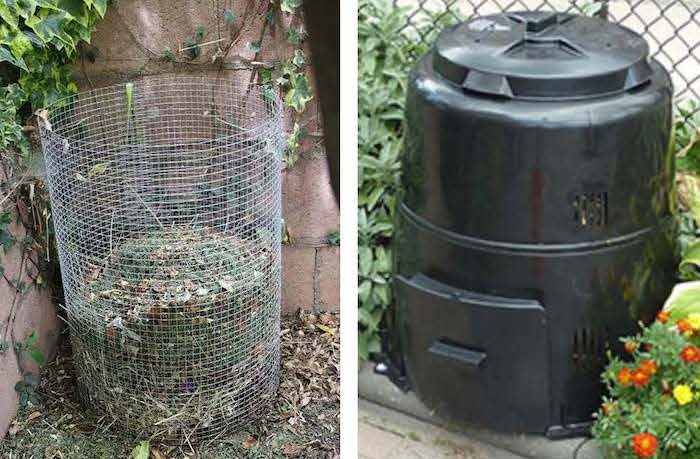
A homemade compost bin (left) and a manufactured bin (right). You can also make a wood-frame bin or a compost pile. (Photos from N.C. Composting Council)
How to make compost
You can use a compost bin, a wooden or wire frame, or a compost pile. The pile or bin should be about 3 to 5 feet high and 3 feet in diameter so that it can retain heat. Locate it in a flat part of your yard, away from the house but near a water source.
Use two or three parts of “browns” to every one part of “greens” as you layer materials in your container or pile. Browns are carbon sources such as dry leaves, wood chips and twigs. Greens are sources of nitrogen; examples are fruits and vegetables, grass clippings and crushed eggshells. Don’t put items such as meat and bones, dairy products or pet feces in your composting; more details are in linked resources at the end of this article.
Both browns and greens provide energy to microorganisms in your compost. Cutting organic materials into small pieces will increase microbial activity and will make the materials easier to stir.
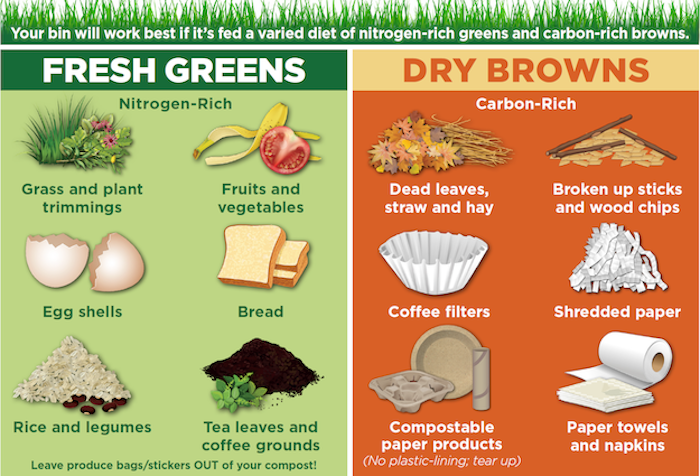
Examples of greens and browns. (N.C. Department of Environmental Quality)
Start by layering about 4 or 5 inches of browns, then 2 or 3 inches of greens. On top, add another layer of browns, and repeat the layering the next time you have food scraps to add. Add water with each layer.
Once a week, aerate the compost, stirring it with a garden fork or other tool. Depending on how much heat your compost container or pile generates, and how often you aerate, it can take six to 12 months for food waste to break down into compost that you can use in your garden.
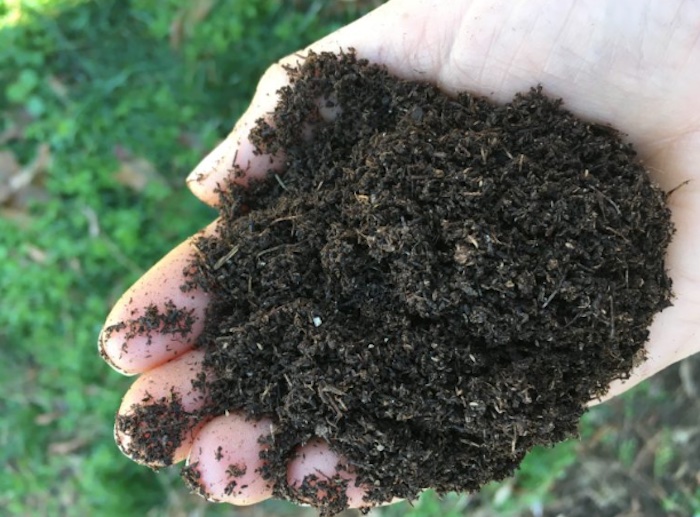
Compost looks like crumbly, dark-colored dirt and has an earthy smell. (NC Cooperative Extension, Caldwell County Center)
When is compost is ready to use?
Compost is ready to use when the material is a crumbly brown, soil-like material that is even in texture and has an earthy smell. The temperature of the compost pile will be the same as the outdoor temperature.
How to use compost
Use compost as a soil amendment in your garden. Work 3 to 4 inches of compost into the top 8 to 12 inches of soil before you start a new garden bed. Add a layer of up to 1 inch of compost to the soil of established gardens and work it into the top 8 to 12 inches of soil.
For new landscape plants, add about 3 to 4 inches of compost to the soil where you are planting and mix the compost into the soil.
The compost can improve the texture of the soil and it helps with moisture retention. It also improves drainage and attracts earthworms, which aerate the soil.
You can add compost to the soil in flower and vegetable beds, containers and lawns, and around shrubs and trees. Compost can help soil retain moisture and it may help to curb diseases and pests.
If you are putting compost on top of garden soil as mulch, add some brown material such as wood chips on top of it.
Compost holds some nutrients but you will need other fertilizers for your plants. You can get soil test kits at the Orange County Extension office, 1020 US Hwy 70 West, Hillsborough, NC 27278.
Local composting resources
Compost bins and food scrap buckets: Orange County sells compost bins and countertop buckets for collecting food scraps. More information here. These items are also available at some home and garden stores or online retailers.
Drop-off sites and compost collection: If you don’t have a compost bin or pile, you can still compost! Orange County residents can drop off food waste and other compostable materials at six locations. Some compost collection services also do business in our area.
Compost demonstration sites: Orange County has two compost demonstration sites. The county offers composting instruction at these locations and also does free composting education at schools or local organizations.
- Chapel Hill Community Center (behind rose garden), 121 S. Estes Dr., Chapel Hill.
- Orange County Solid Waste Management Administrative Office, 1207 Eubanks Rd., Chapel Hill.
There is also a demonstration compost bin at the Orange County Extension office, 1020 US Hwy 70 W, Hillsborough. The bin, on the side of the Bonnie B. Davis Environment and Agricultural Center, is made of metal posts and wooden pallets.
Additional resources
- Compost at home. Orange County Department of Solid Waste Management.
- Backyard composting of yard, garden and food discards. NC State Extension.
- Composting (Chapter 2 of North Carolina Extension Gardener Handbook). NC State Extension.
- Home and backyard composting. NC State Extension.
- Video: Tips for backyard composting. NC State Extension.
- Guide to backyard composting. NC Division of Environmental Quality.
(Thanks to Kay Johnson, a Master Gardener volunteer in Orange County, for use of information from her November 2023 talk about composting, part of the Dig Deeper talks at the Orange County Library. Her talk included information from fellow Master Gardener volunteers Leigh Simpson, Alice Niederland and Frances Harris.)
Check Us Out!
- Join Master Gardener volunteers for our monthly Dig Deeper talk on Jan. 27, 2024, 2-3:30 p.m., at the Orange County Library in Hillsborough. The speaker will be Yolana Murrell, a Master Gardener volunteer in Orange County. Her topic is Vegetables: The Thrill of Victory and the Agony of Defeat. Please register on the library’s website.
- Have a plant or garden question? Email the Orange County Master Gardener volunteers at ocmgardeners@gmail.com or phone 919-245-2061.
- Subscribe to The Garden Buzz, the Orange County Master Gardeners’ monthly newsletter, for gardening news and tips. And visit our website, The Orange Gardener, for helpful gardening information and tips.
- Follow us on Facebook! Our page is Orange County NC Extension Master Gardener Volunteer.
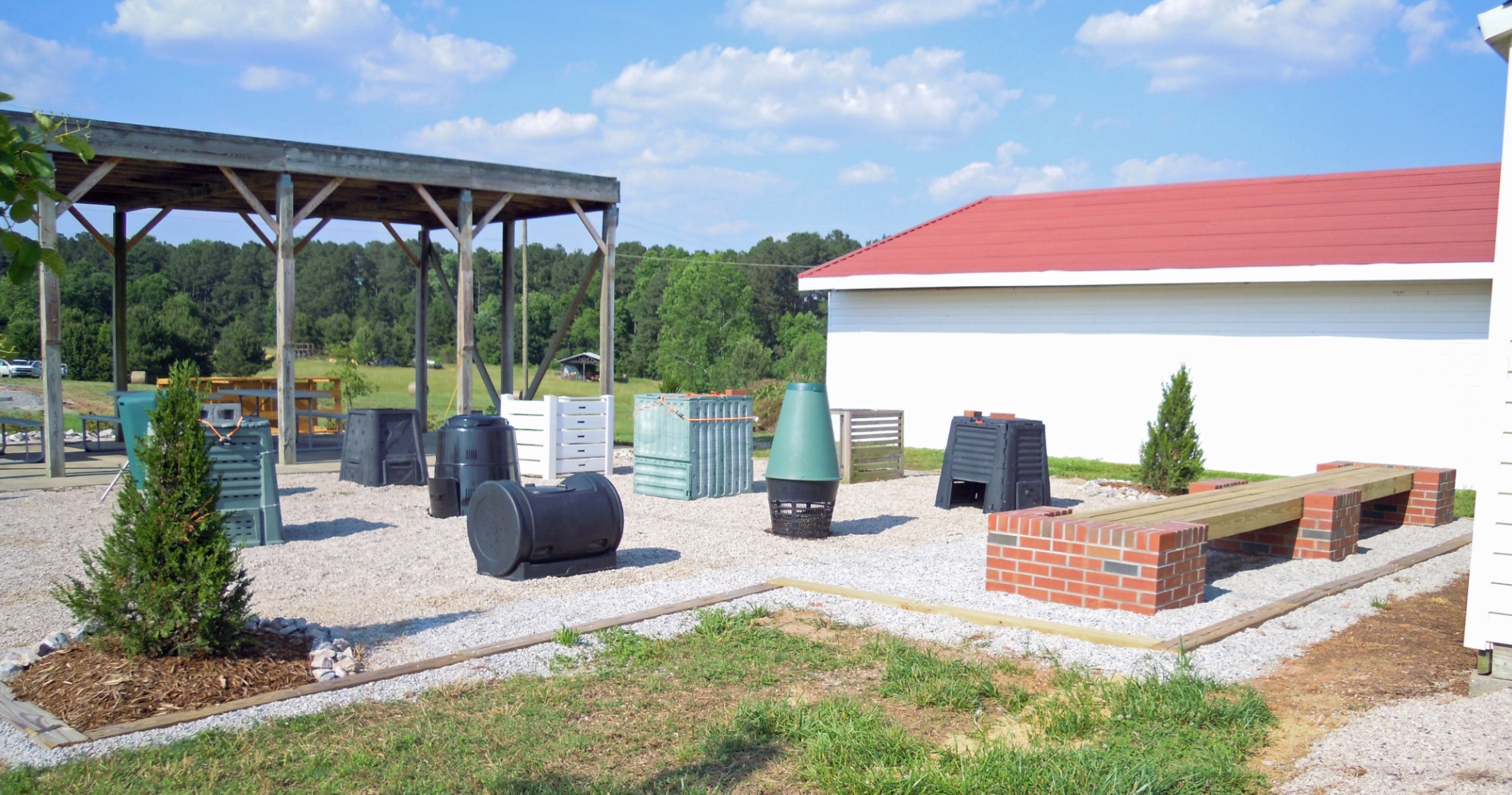
The Compost Learning Lab at NC State University shows composting containers. (NCSU photo)
Chapelboro.com does not charge subscription fees, and you can directly support our efforts in local journalism here. Want more of what you see on Chapelboro? Let us bring free local news and community information to you by signing up for our biweekly newsletter.

